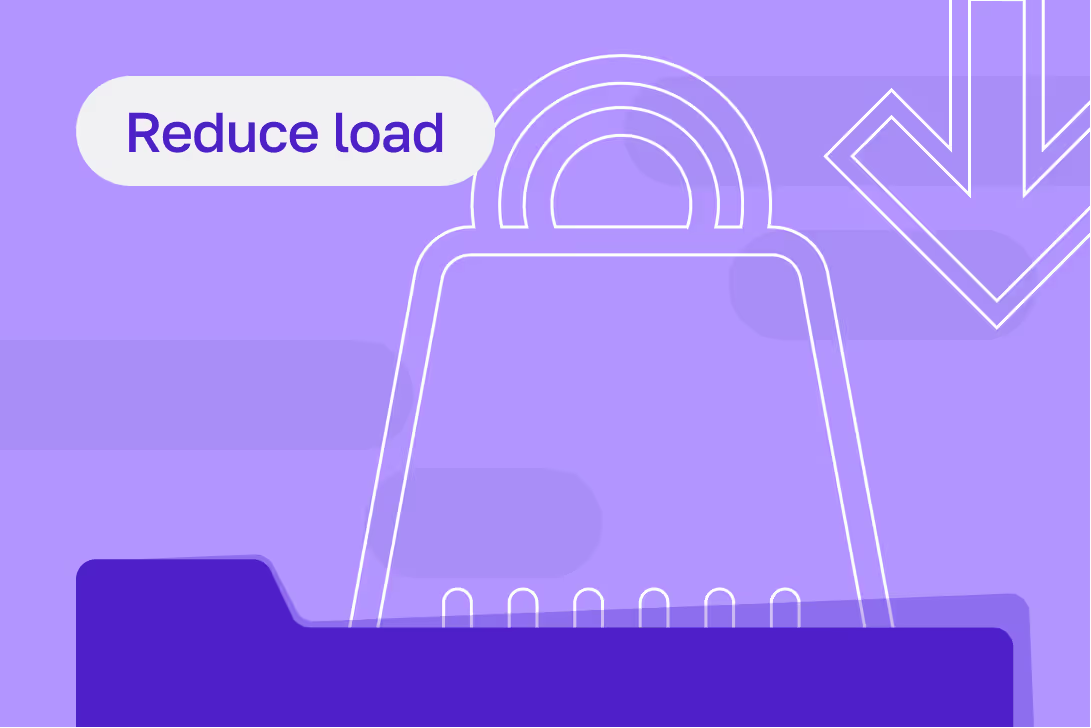AI help desk tools: The good, the bad, and the reality check

.png)
Listen to this blog as a podcast

.png)
IT leaders are tired of whiplash. Budgets are tight, tickets keep coming, and employees expect consumer-grade support at work. AI help desk tools promise relief, from faster triage to always-on responses, and they have become a real option, not just experimental new tech.
This piece provides a clear view of where these tools excel, where they falter, and what it takes to make them truly effective in the rough and tumble reality of enterprise environments. If you are weighing your next move on automation, consider this your practical field guide.
Why AI in the help desk is surging
Budget pressure hasn’t eased, yet ticket volumes keep growing. That’s why teams are leaning into automation for predictable tasks while keeping people focused on judgment calls.
When you get the mix right, it shortens the queue, speeds up resolutions, and frees analysts to work on improvements. If you’re starting your evaluation, skim our plain-English overview of the AI help desk landscape to frame the options.
Two forces are accelerating adoption. First, employees expect consumer-grade support at work. Second, today’s models are much better at understanding intent and mapping it to actions. The result isn’t magic; it’s pragmatic time savings that compound as you expand coverage.
Where AI help desk tools deliver clear wins
You don’t need a massive overhaul to see value. Start with high-volume, low-risk workflows and measure outcomes you can share with stakeholders.
Here’s why that approach works and what to expect:
- Faster intake and triage: Virtual agents classify requests and route them correctly within seconds, which reduces queue thrash. Pair this with your core IT ticketing software to update fields, set SLAs, and trigger downstream automations without manual effort. A small change early in the flow ripples through the entire lifecycle.
- Automation of repetitive tasks: Password resets, software access, distribution list changes, printer fixes, and common app FAQs are strong candidates. In these cases, AI help desk tools handle the steps the same way every time, which improves consistency and frees analysts for deeper work. Done well, this is measurable deflection, not a vague promise.
- Always-on support without burnout: When employees can self-serve at any hour, frustration drops. That matters for distributed teams that don’t share a single time zone. If your after-hours on-call team feels overloaded, this is a straightforward relief valve. Round-the-clock coverage should be designed with clear escalation paths, not as a wall between people and help.
For a vendor-agnostic overview of the category, including decision criteria and market patterns, bookmark our guide to the best help desk software. It is a useful comparison tool to keep discussions grounded.
The gotchas that stall otherwise promising rollouts
Every organization has edge cases and legacy quirks. AI will magnify whatever is already there.
Anticipate these pitfalls, and you will avoid the most common reboots:
- Weak knowledge bases: If articles are outdated or orphaned from real workflows, the model will confidently provide incorrect advice. Assign owners, review monthly, and tie each article to a specific automation. This is a foundational practice within modern support ticketing software programs.
- Brittle integrations: APIs time out, payloads change, and vendors update software. Build in graceful failure and transparent handoffs to a human, with full context. That transparency is the difference between a quick rescue and restarting from scratch.
- Poor user experience: If clunky flows send users down the wrong path, chances are they may be a one-and-done user of your self-service support bot. Provide employees with a clear path to a person, summarize the steps as you go, and confirm the next actions. When confidence drops below a threshold, escalate with transcripts and a record of attempted actions attached.
- Unclear policy boundaries: Without guardrails, a bot might approve something that should require a manager. Set explicit scopes for automated actions and make approvals auditable. You can broaden the scope over time, but you cannot undo a trust-breaking incident.
These are solvable challenges. Use them to shape your pilot plan, and document assumptions so success criteria are unambiguous.
The reality check for leaders: AI is an amplifier
AI doesn’t fix broken processes. It speeds up what already works, and it exposes what doesn’t. Treat it as a force multiplier for IT support services, not a replacement for them.
This means standardizing request types, aligning ownership, and cleaning up stale fields in your ticketing system before scaling. It also means leaning on human-in-the-loop designs. People should handle exceptions, policy-heavy approvals, and novel issues.
AI models should handle classification, lookups, and repeatable actions. Independent perspectives also echo this balance, including the NIST AI Risk Management Framework's emphasis on human oversight, McKinsey’s analysis of AI in service operations on productivity gains, and the Stanford AI Index's examination of adoption trends.
What to look for: Features of help desk software that matter for AI
Let’s take a look at the practical capabilities that distinguish slideware from systems that work in the real world.
Use this section as your short list during demos:
- Natural language understanding for real employee phrasing: Your workforce won’t speak in ticket taxonomy. Strong systems map everyday language to intent, which is then mapped to actions. Ask vendors to demonstrate learning from feedback without long change cycles.
- Rich orchestration and safe actions: The platform should expose approvals, identity checks, and scoped credentials. Start narrow, then version and expand.
- Tight alignment with your system of record: Direct connectors to IT ticketing software keep data consistent. Look for bi-directional updates, comment syncing, and field-level controls. If the model can’t write back reliably, analysts will revert to manual updates.
- Clear escalation and audit trails: When confidence wanes, the handoff should include the full conversation, the steps attempted, and the reason the automation stopped. This saves your team rework time and enables the failure reasons to fuel design input.
- Analytics that power decisions: You need visibility into deflection by category, first-contact resolution rates, time-to-resolution, and customer satisfaction. Without this, you’ll just be guessing at impact.
These capabilities are the backbone features of help desk software when AI is in the loop.
If you want to see these capabilities in the broader tooling context, our roundup of the best AI tools for business covers adjacent categories and useful integrations.
How to implement: A simple, durable rollout plan
Every environment is different, but the sequence below is applicable across various industries. Each step is intentionally small and measurable, so you can socialize progress without overhyping results.
Here’s how to implement it:
- Choose five high-volume use cases: Pull last-quarter data and pick requests with clear policies and low risk. Examples include password resets, app access, and basic device support. Write down baseline handle times and resolution rates.
- Connect to your support stack: Integrate the bot with your primary support ticketing software for seamless intake, categorization, and field updates. Confirm that identity, approvals, and notifications flow through a single system of record.
- Build guardrails: Define what the bot can do, where it must ask for approval, and when it must escalate. Test failure paths first. This makes launch week boring in the best way.
- Launch, measure, iterate: Use weekly check-ins to review deflection by category, escalation reasons, and user feedback. Fix the top friction points, then expand. Our practical 4-step model for using AI and automation tools shows how to operationalize this rhythm across teams.
A steady cadence beats a big-bang rollout. Treat each expansion as another controlled experiment.
Choosing your stack: Platform, best-of-breed, or both
Some teams want an all-in-one platform. Others prefer modular components connected to their core system of record. Both approaches can work.
If you visit the platform, verify that it handles your top ticket categories immediately. If you go modular, ensure integrations are real, not just marketing, and that owners are clear.
When comparing chat-centric tools with embedded automations, it is worthwhile to explore a buyer’s perspective on alternatives to Moveworks. You will see how a human-centered approach gives you more control, how pricing models differ, and what change management will look like after launch.
A quick FAQ to keep everyone aligned
Stakeholders will ask similar questions. Use these answers as a starting point for internal docs and training.
What is the difference between IT ticketing software and helpdesk ticketing software?
Functionally, there’s considerable overlap. In many teams, helpdesk ticketing software is the front door for employees, and IT ticketing software is the broader system of record for IT service management. What matters most is clarity on ownership, fields, and workflows, so that data does not become fragmented.
How do we talk about the features of help desk software without getting lost in buzzwords?
Anchor on outcomes. Focus on intake quality, automation coverage, escalation clarity, and analytics that inform decisions. These are the features of help desk software that tie directly to service performance.
Which vendors qualify as the best help desk ticketing software?
Rankings shift over time, and your environment is unique. Use your top five ticket categories, integration needs, and guardrail requirements as filters. Shortlist options that prove value against your data during a time-boxed pilot, then negotiate from a position of evidence.
If you need to align non-technical stakeholders, share this primer on what is service desk software. It sets a helpful baseline for roles, processes, and systems.
Putting it all together for a safer, smarter upgrade
You do not need to bet the farm to benefit from AI. Start small, measure honestly, and expand coverage as your policies and knowledge base mature. When teams align on outcomes, AI help desk tools become a practical way to reduce wait time, improve consistency, and give analysts time for work that prevents future incidents.
Ready to see what this looks like in your environment today, not someday?
Request a demo to build smarter and scale faster.
Buyer’s checklist you can use this quarter
You can use the list below during vendor demos.
Capture the answers on one page so your team can compare options quickly:
- Which five workflows will we automate first?
- Who owns the knowledge articles, and how often will they be reviewed?
- How does the tool connect to our IT ticketing software and identity stack without creating parallel processes?
- What are the explicit guardrails for actions, approvals, and escalation to a human with transcripts and attempted steps?
- Which analytics will we rely on weekly for decisions, and who is accountable for addressing outliers?
- What is our expansion plan once we prove value, and how will we sunset legacy scripts that overlap?
Close the loop by assigning owners and review dates. That structure is what turns a promising pilot into a durable capability.
Related articles

AI for service desk: Why people in the loop make all the difference (and saves you money)


3 Jira automation tips that save your IT team time (and clicks)


7 help desk improvement ideas to slash your team’s ticket load

Stay in the loop

Sign up to get notified about our latest news and blogs
.png)